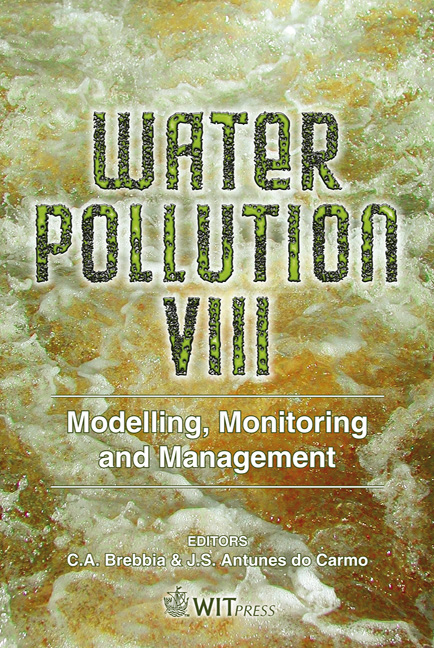Removal Of Chloride From Harbor Oily Sludge By Electrostatic Desalting
Price
Free (open access)
Transaction
Volume
95
Pages
10
Published
2006
Size
300 kb
Paper DOI
10.2495/WP060281
Copyright
WIT Press
Author(s)
Y.-J. Huang, C.-H. Tu & Y. C. Huang
Abstract
The object of this study is to remove the chloride from harbor oily waste by an electrostatic desalting process before it is recovered. The pyrolysis kinetics of emulsified desalted harbor oily sludge were also determined to realize the properties of emulsified desalted harbor oily sludge in thermal treatment. In experiments, the concentration of chloride in the harbor oily waste decreased from 55.7 to 50.1 ppm by using the electrostatic desalting process while the amount of desalter was 20 ppm and reaction time was 1 hour. However, the desalting efficiency was increased by increasing the amount of desalter. The chloride in the harbor oily waste would be decreased to 35.0 ppm by adding 50 ppm of desalter during the reaction time in 20 minutes. The three-stage pyrolysis of the harbor oily sludge was found in the thermal gravimetric analysis (TGA) process. The equations for pyrolysis of the harbor oily sludge in the first and second stages can be expressed as dx1/dt (sec-1)=3.6×105(sec-1) exp(-16084(calmol-1)/R(calmol-1K-1)T(K))(1-x)0.46 (x denotes the reaction conversion) and dx2/dt=1.1×107exp(-21883/RT)(1-x)0.02, respectively. The equations for pyrolysis of the emulsified desalted harbor oily sludge in the first and second stages can be expressed as dx1/dt = 5.0×107 ×exp(-17609/RT) (1-x)0.27 (x denotes the reaction conversion) and dx2/dt=7.6×108exp(-26460/RT)(1-x)0.07, respectively. Keywords: harbor oily sludge, chloride, emulsification, pyrolysis, kinetics.
Keywords
harbor oily sludge, chloride, emulsification, pyrolysis, kinetics.





